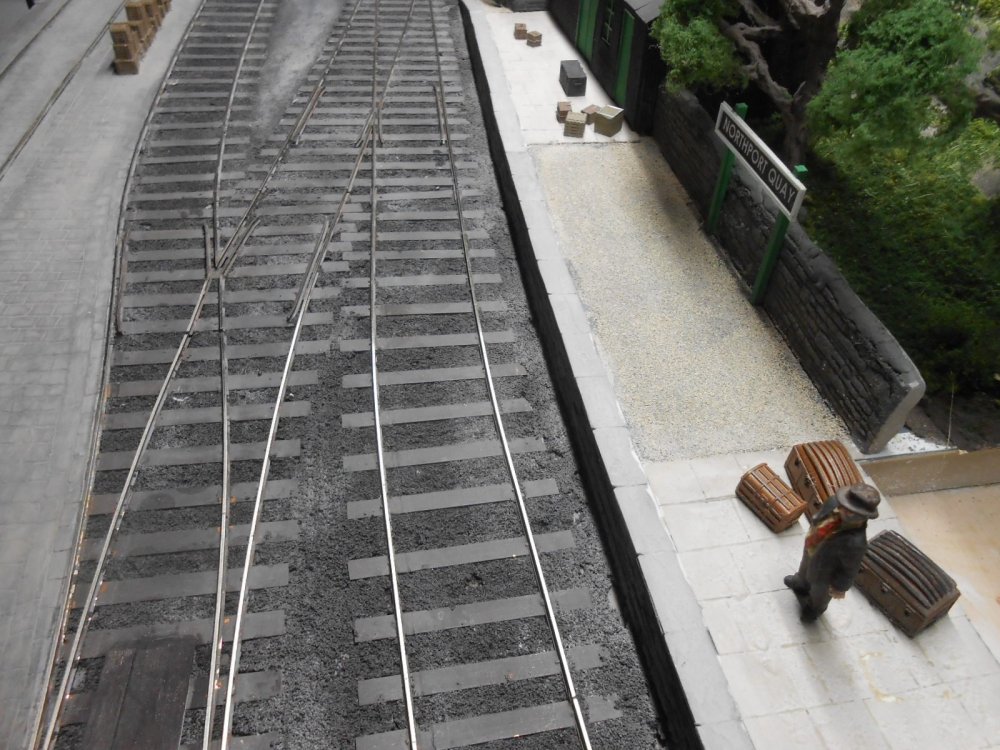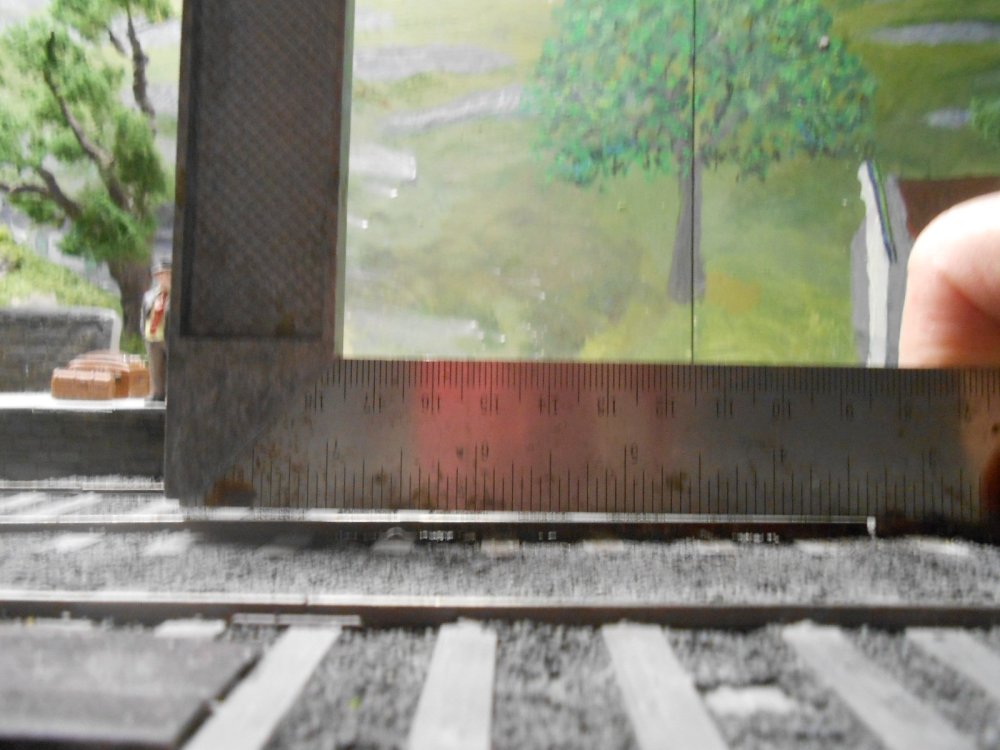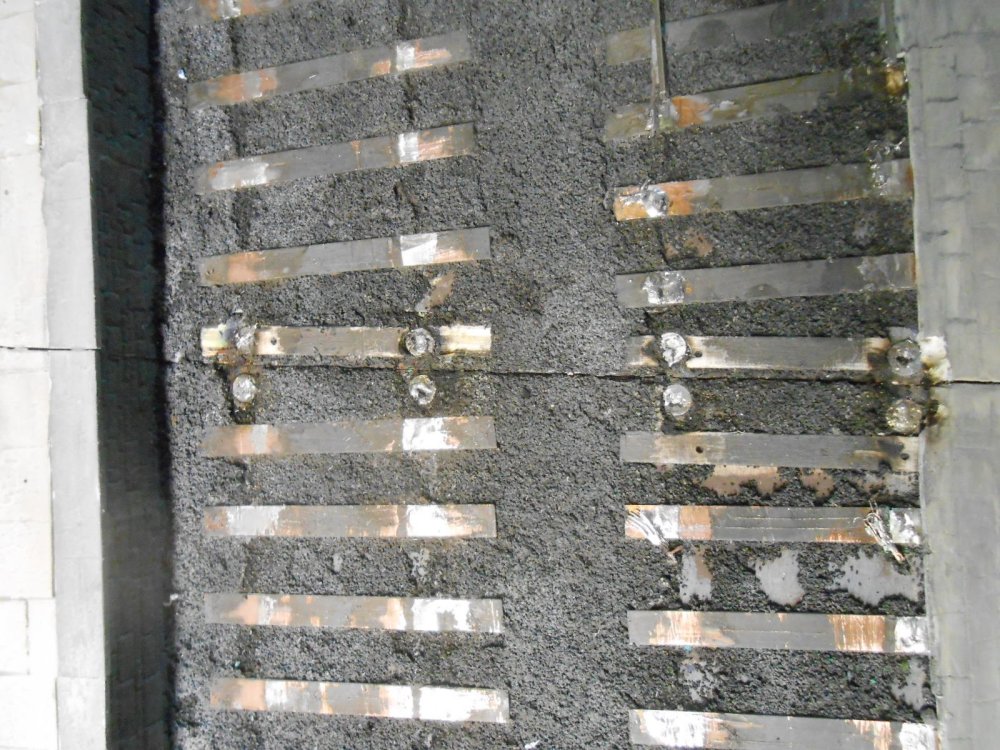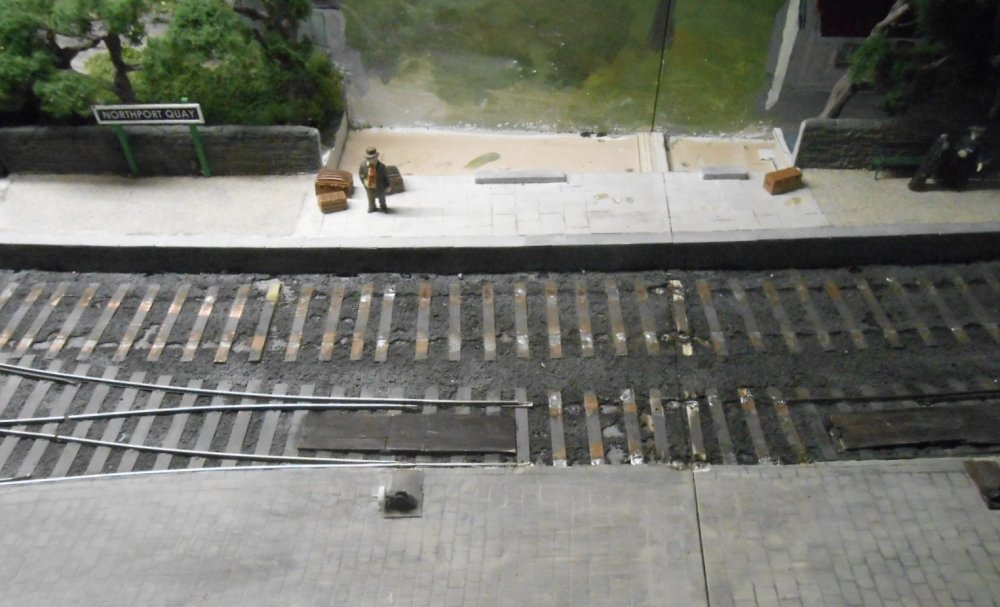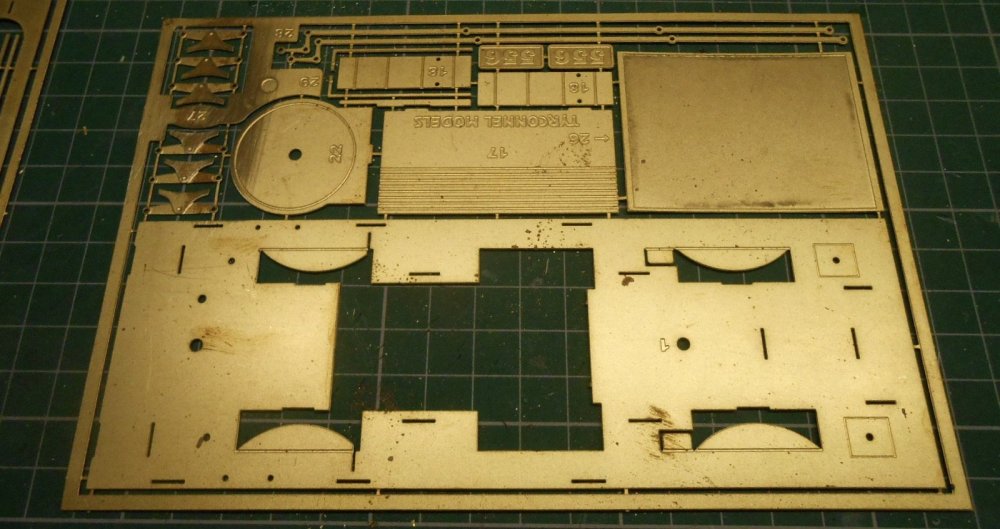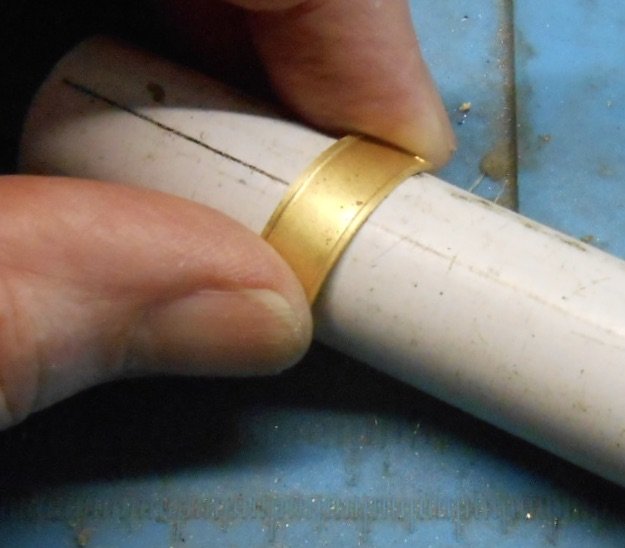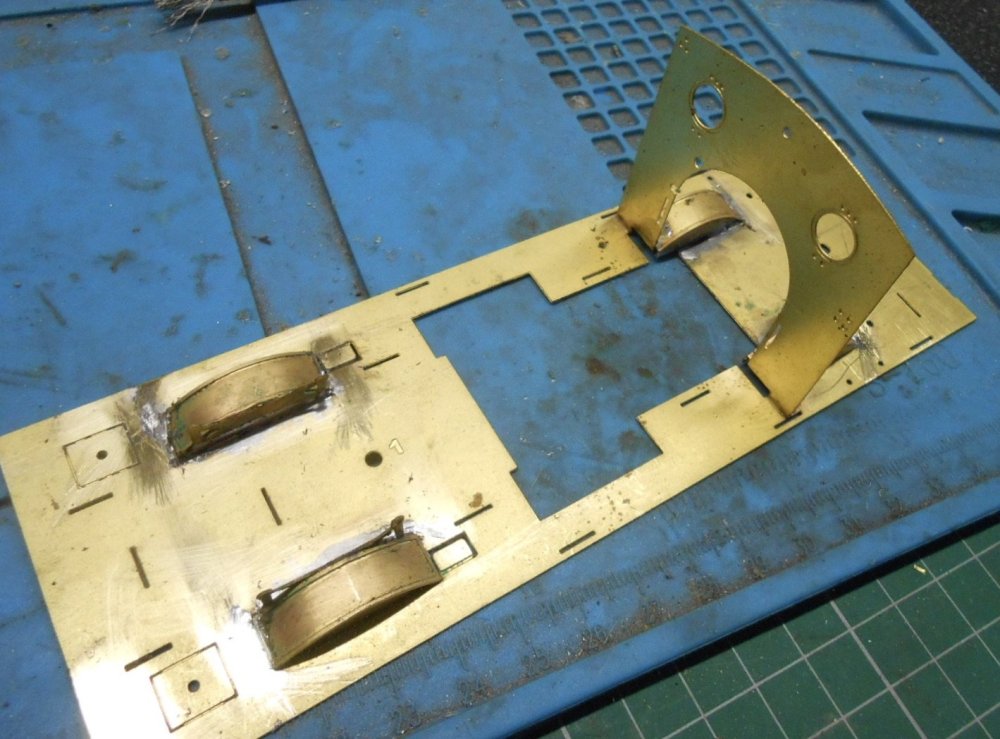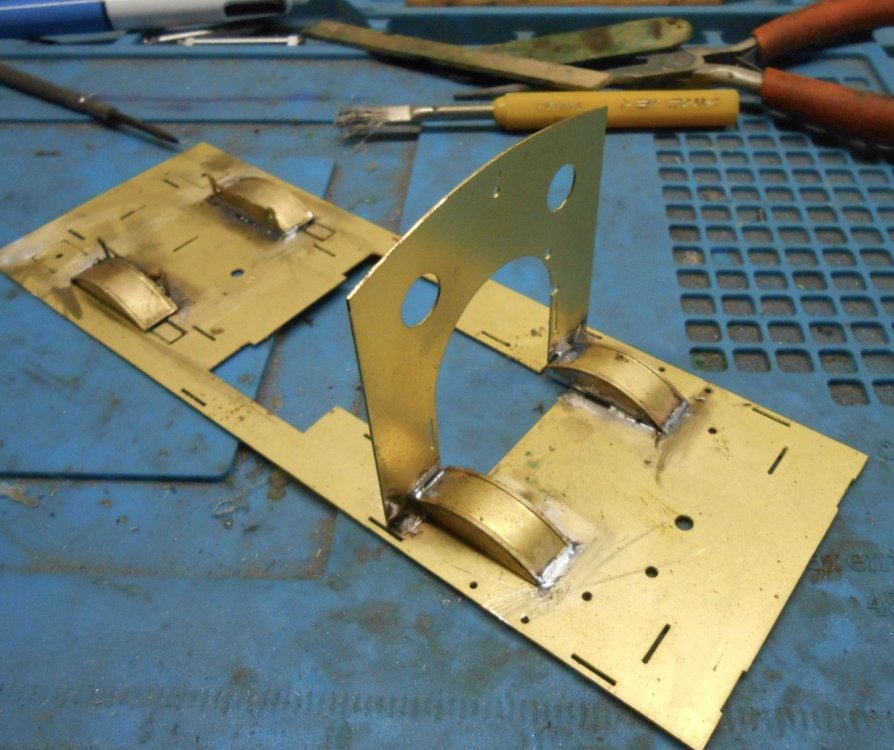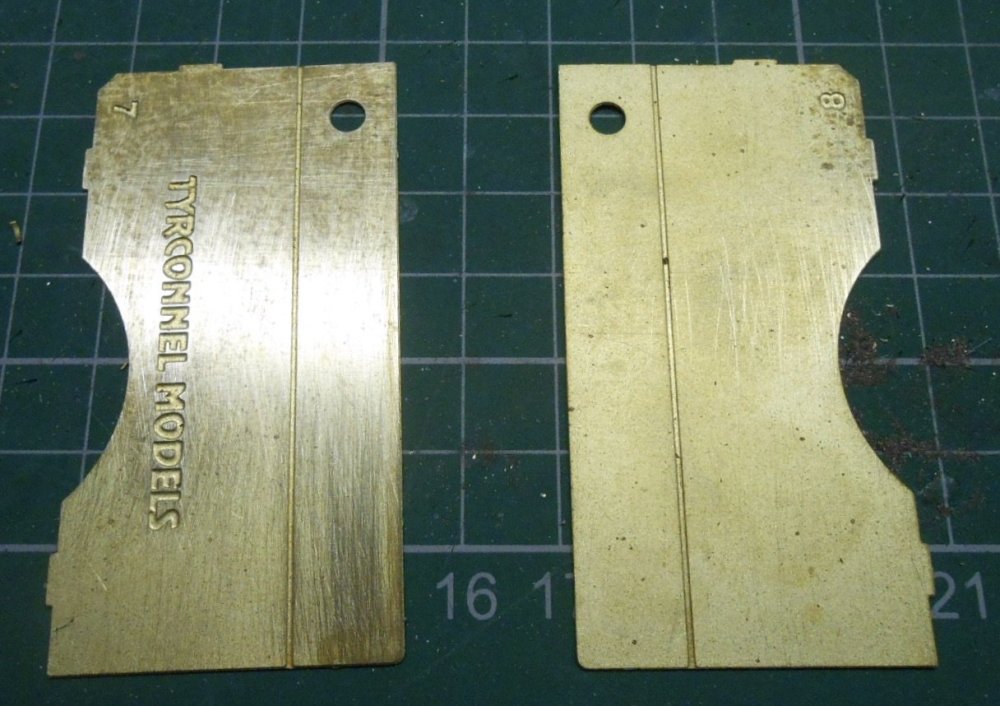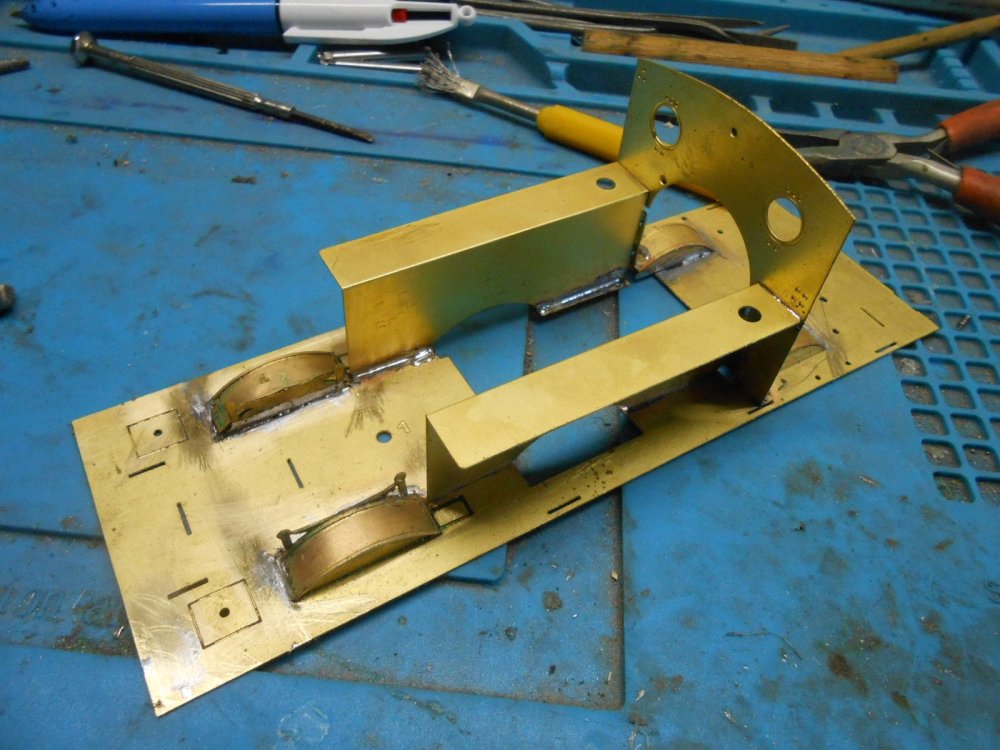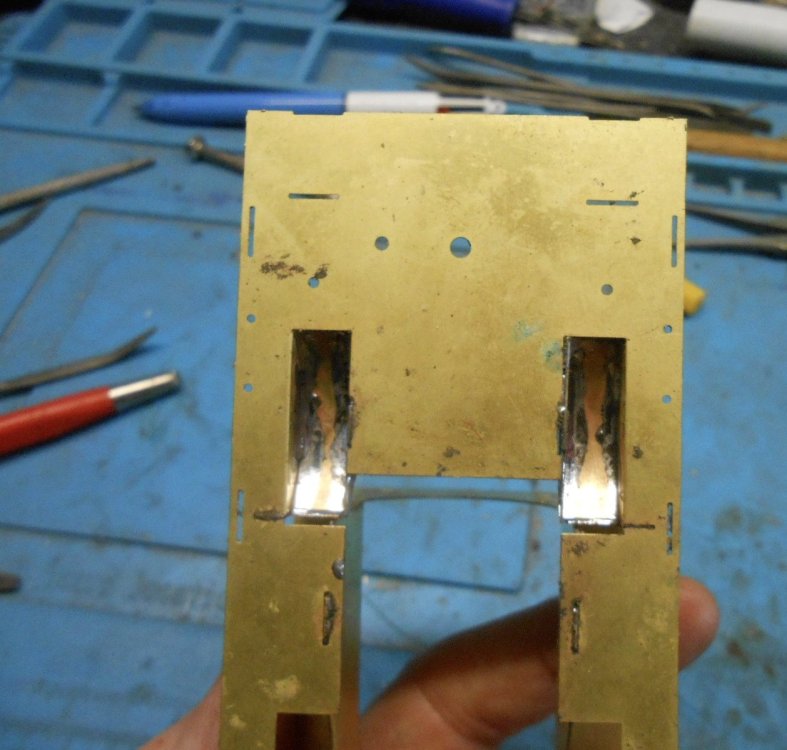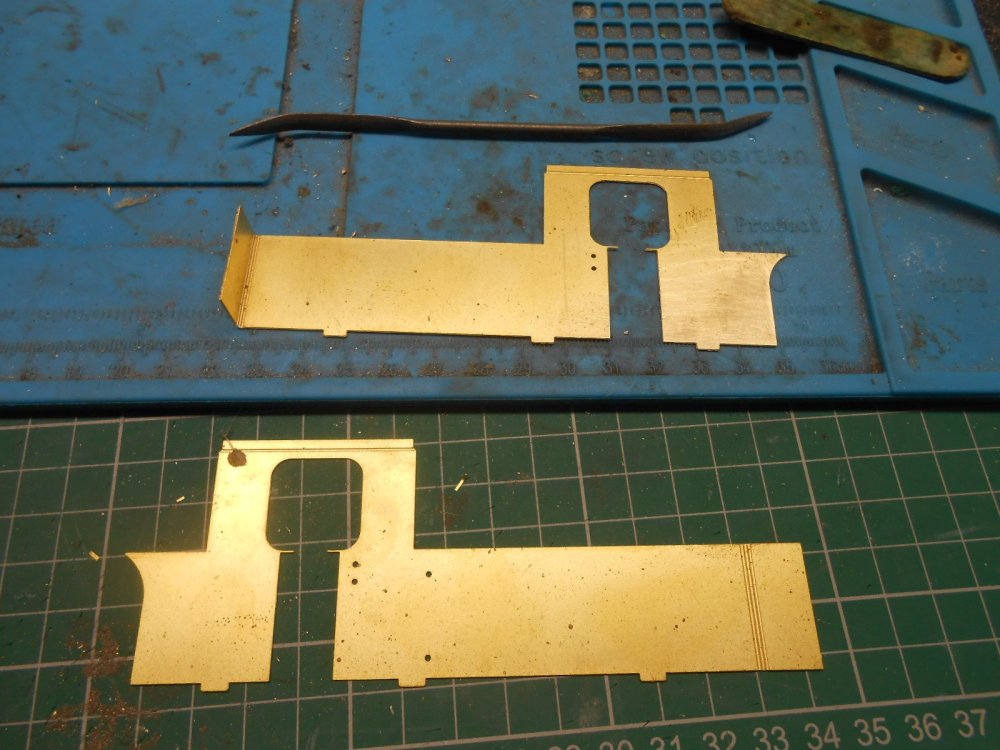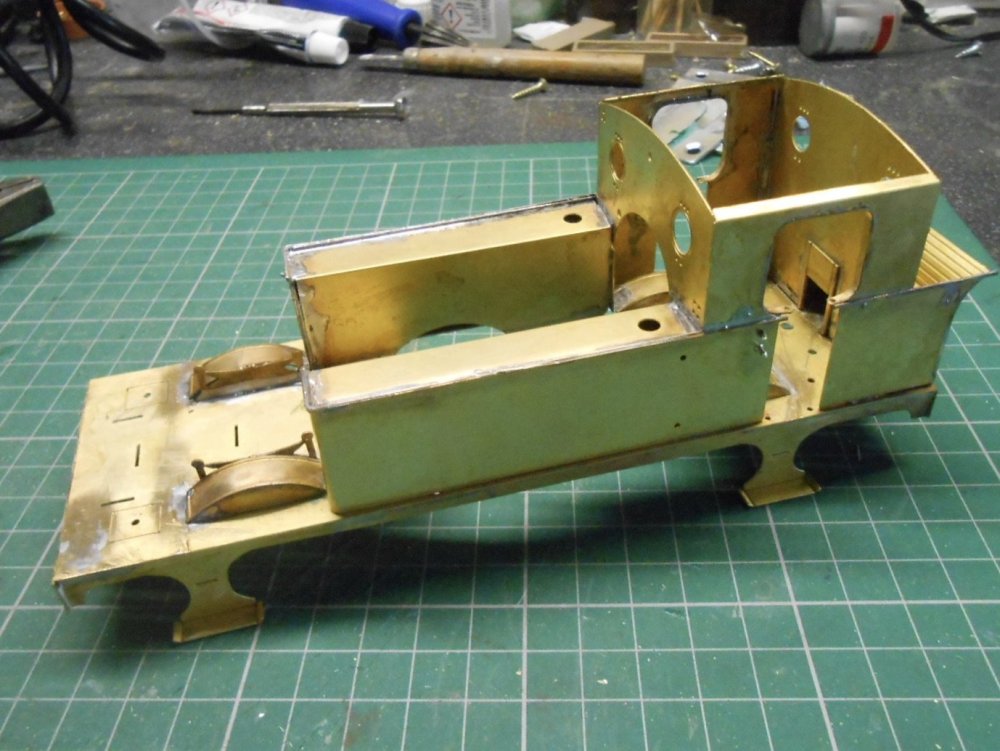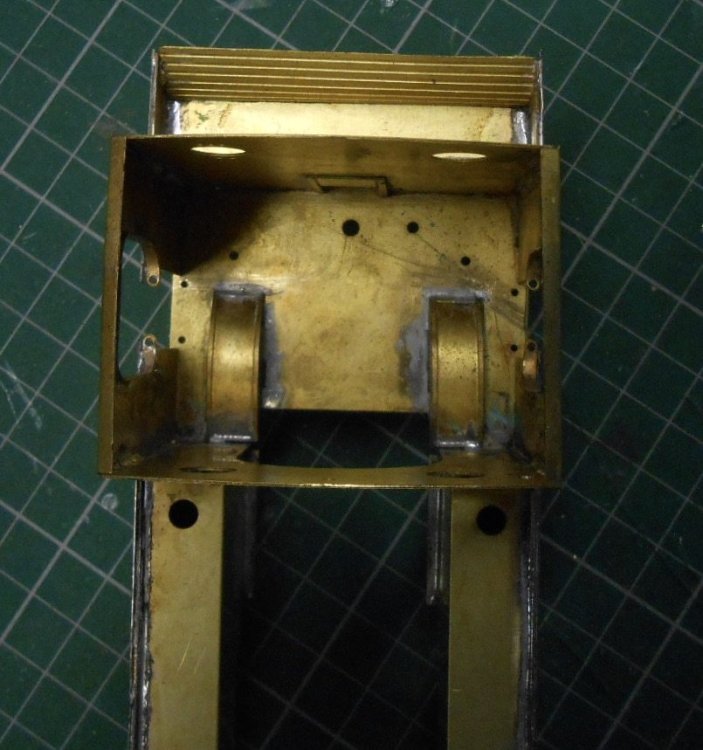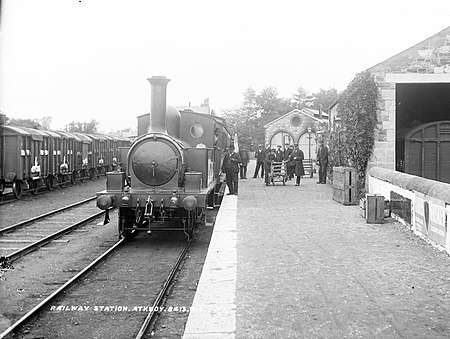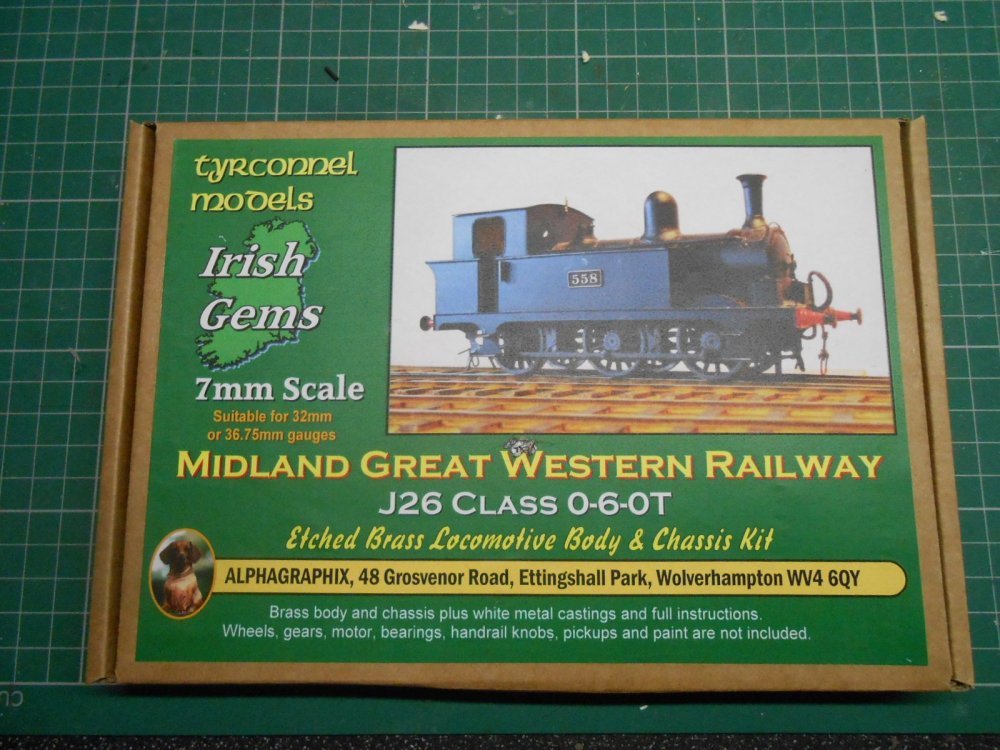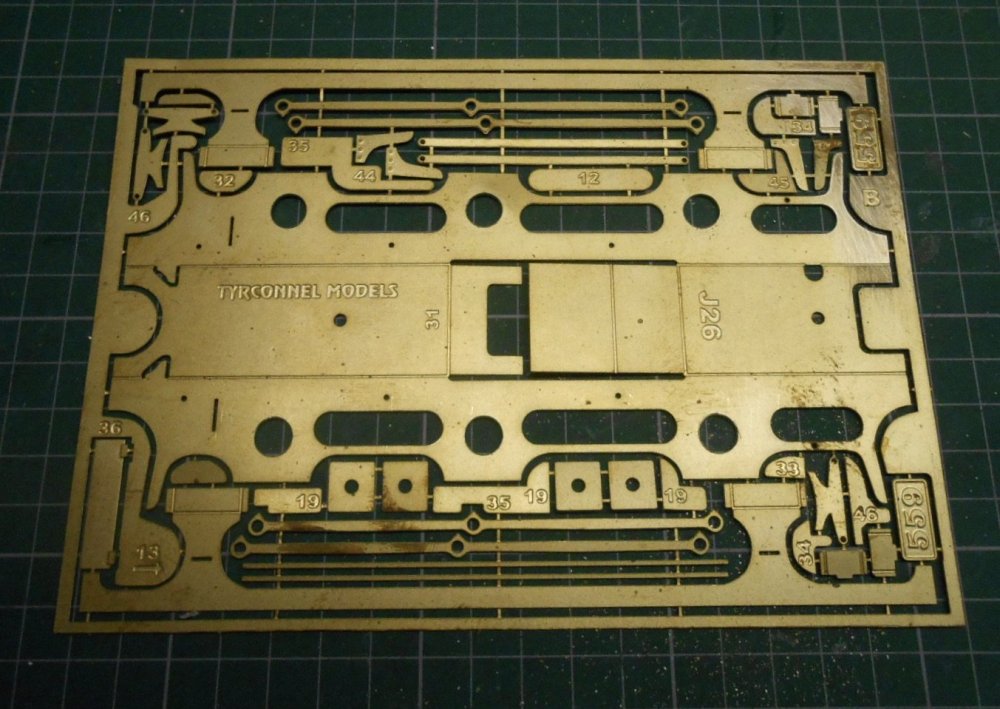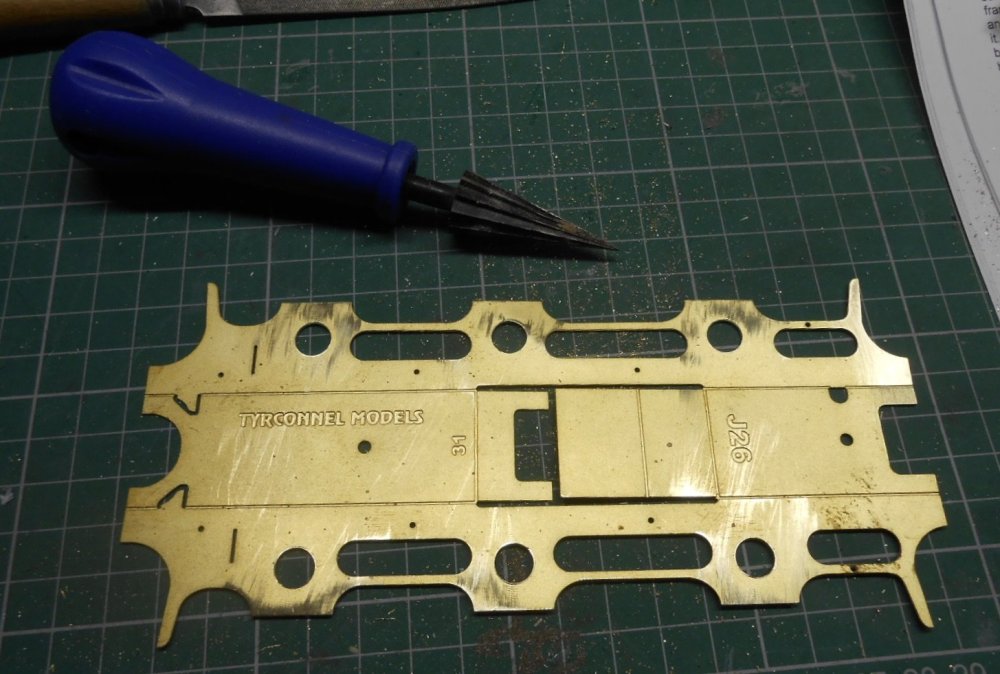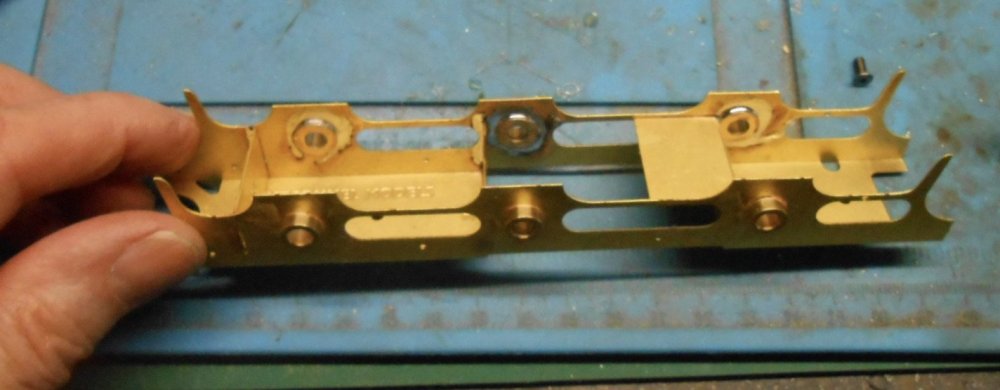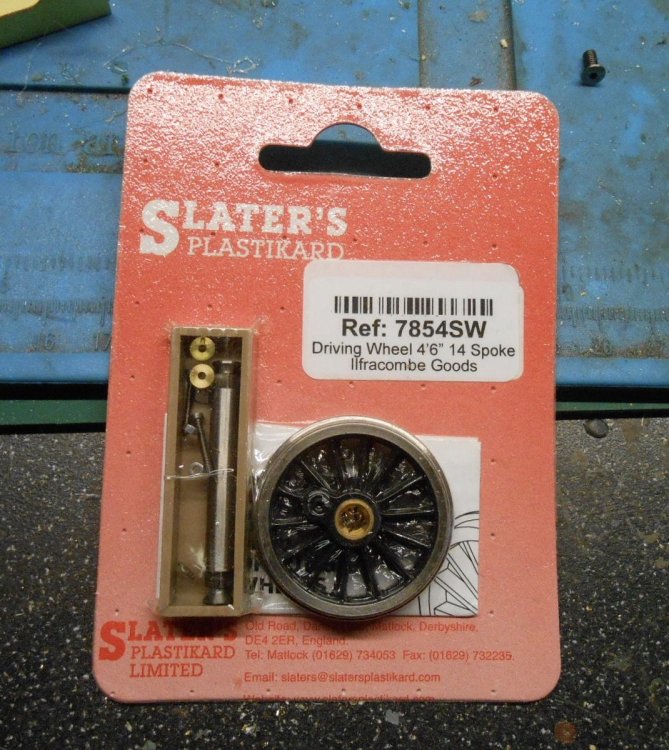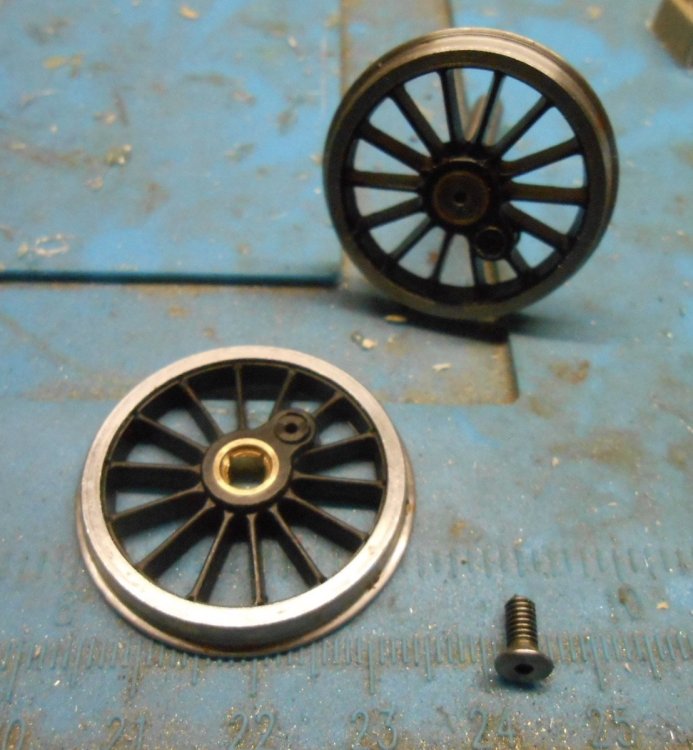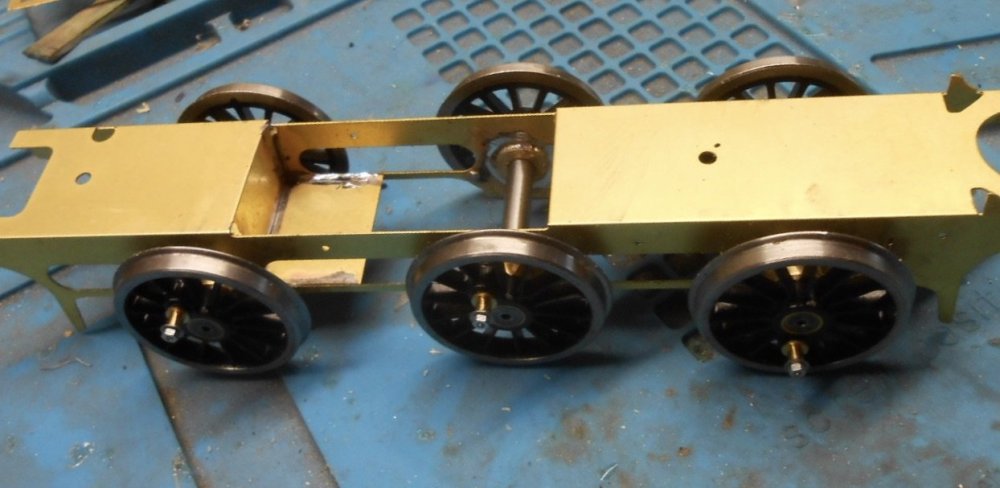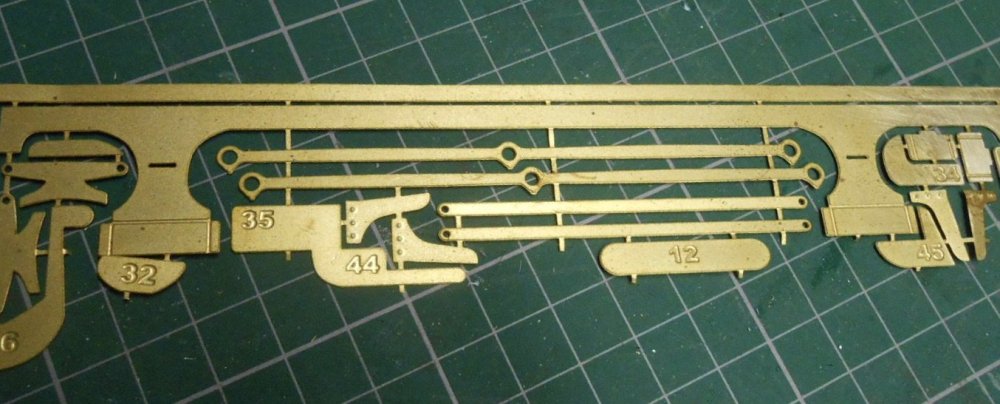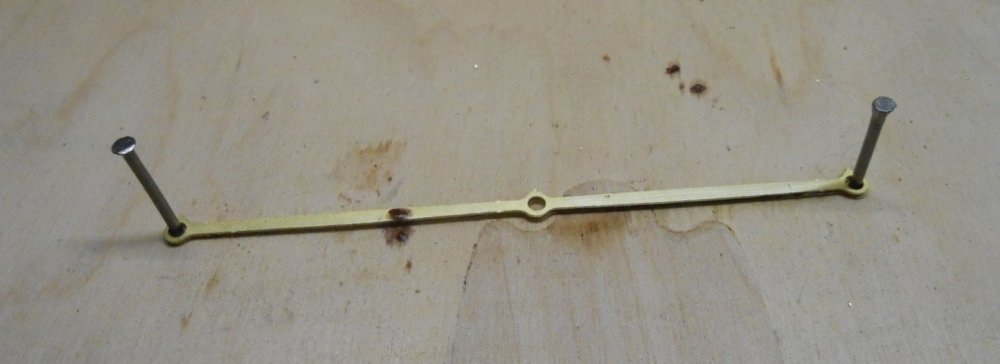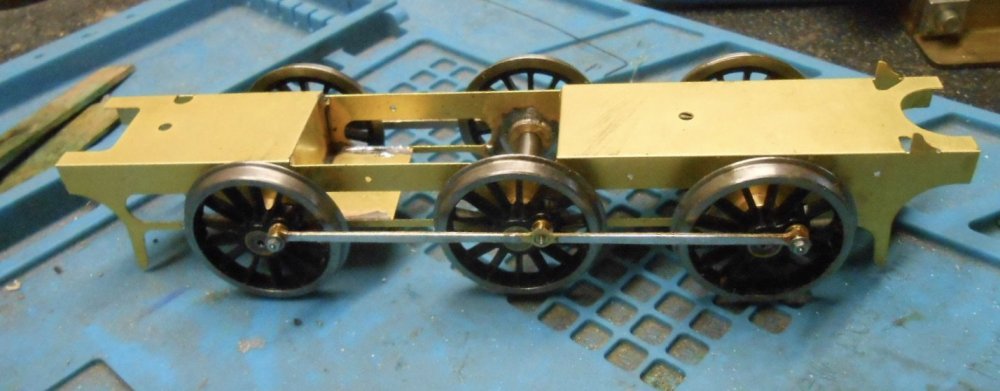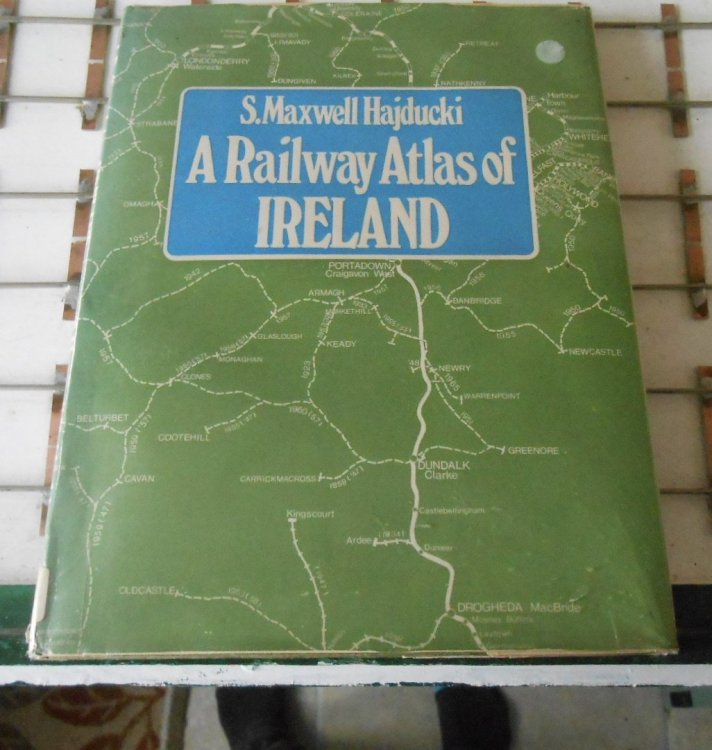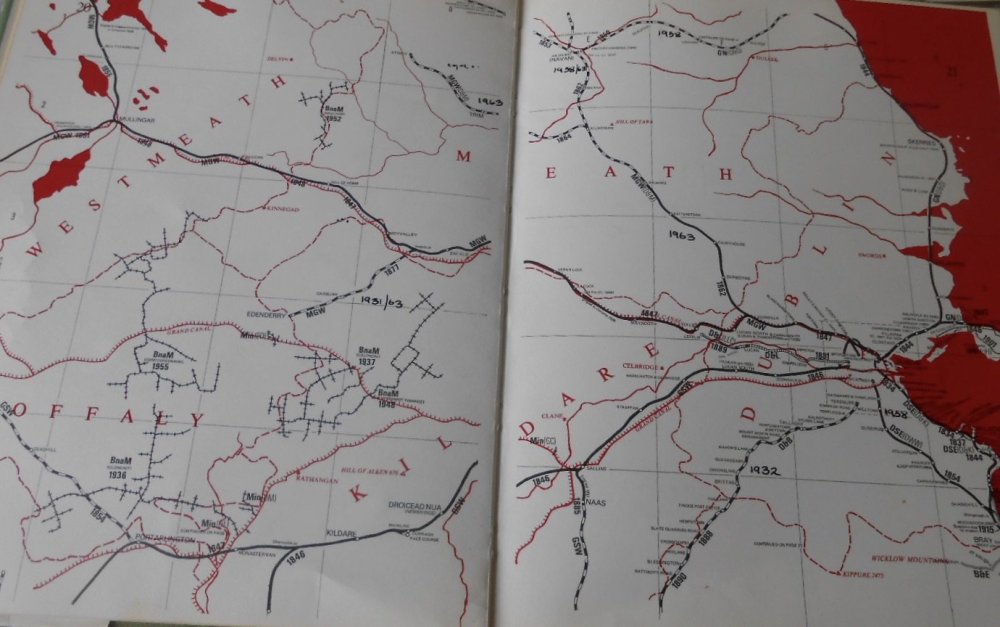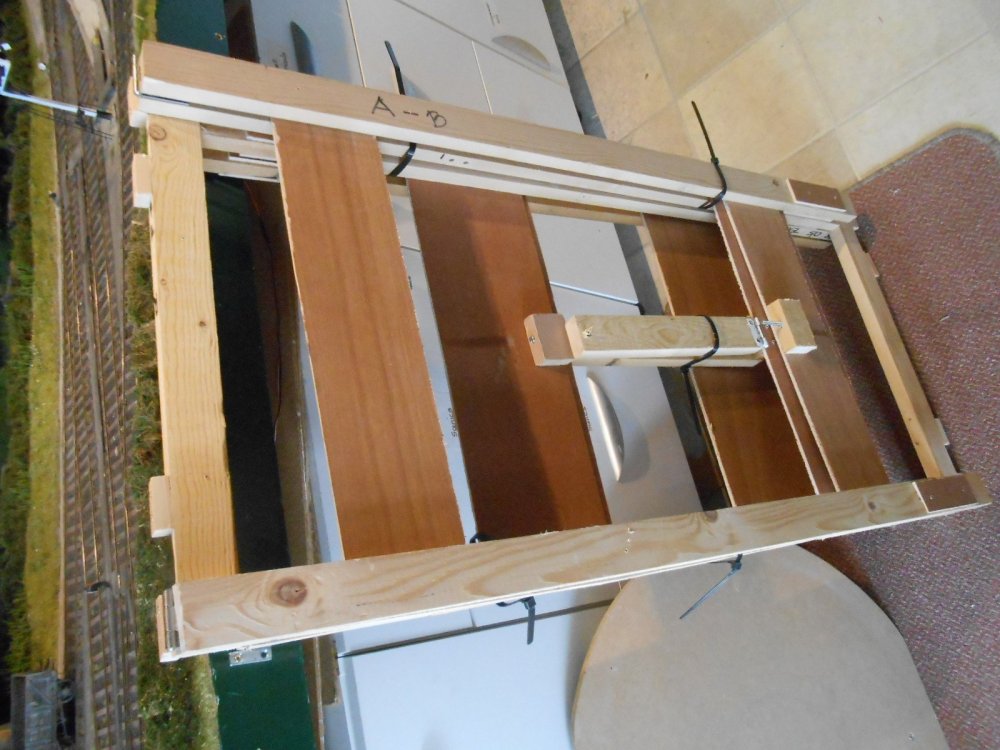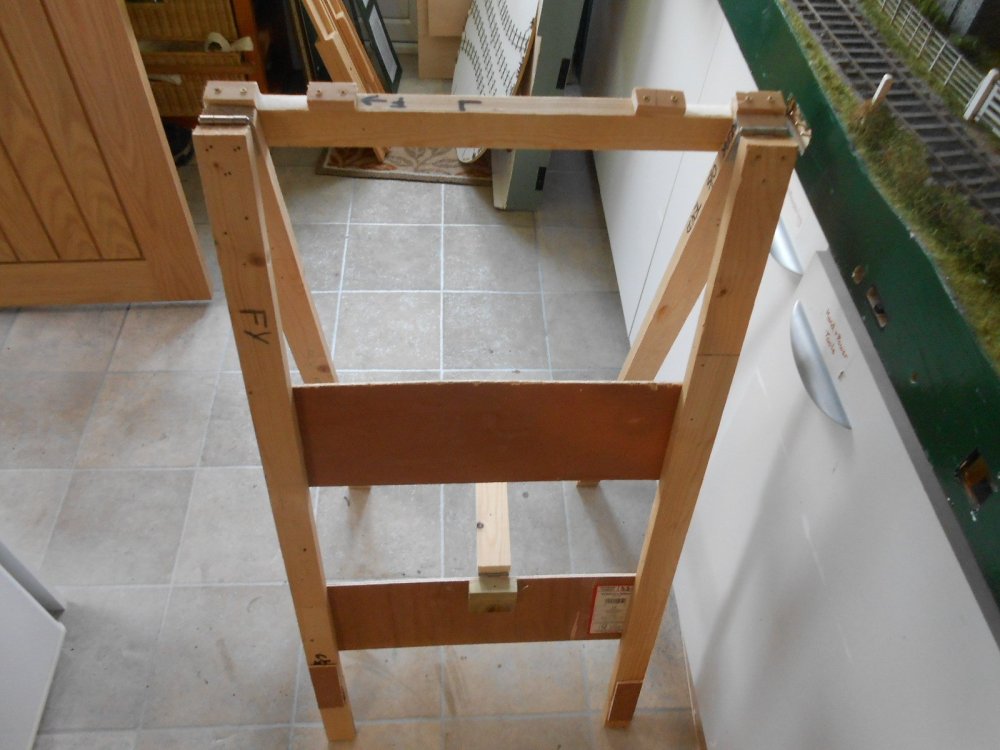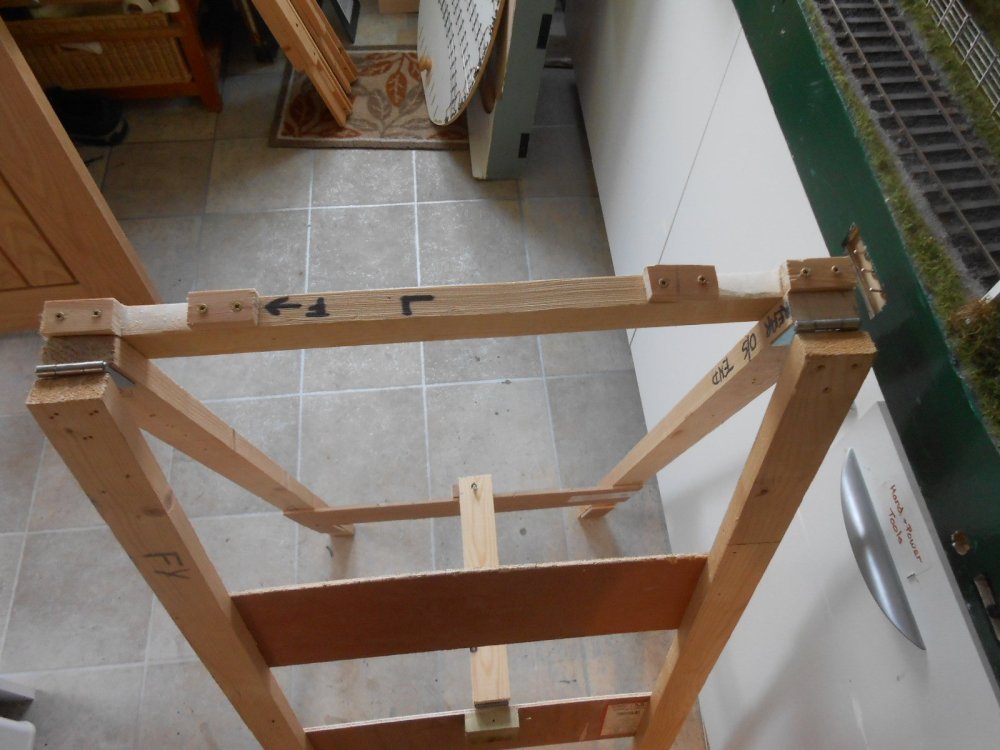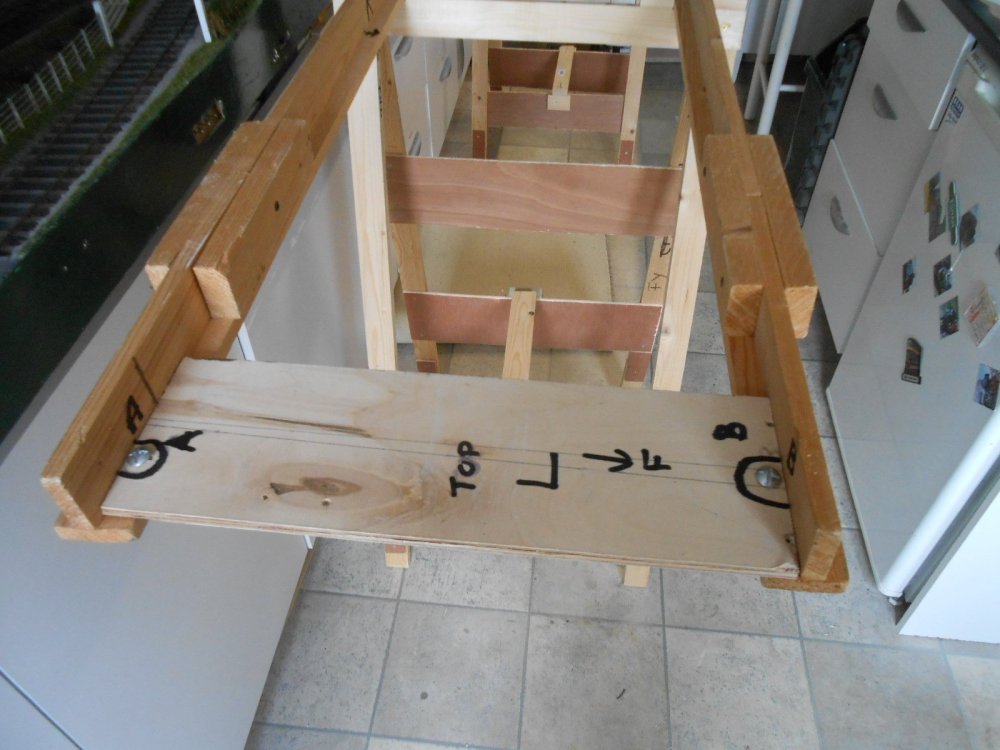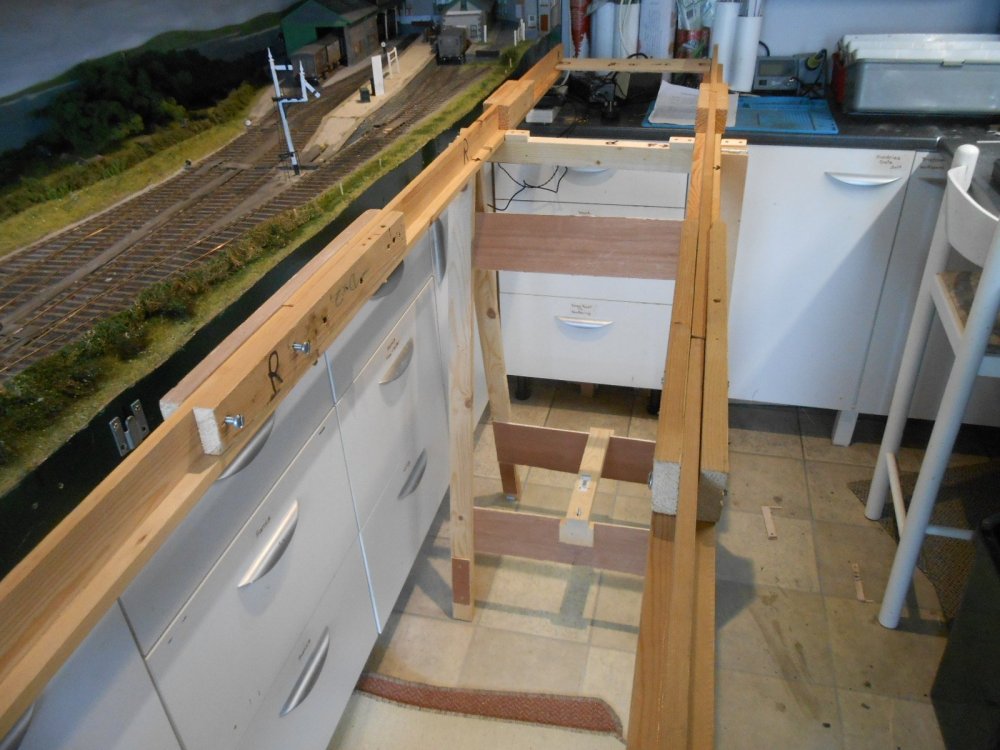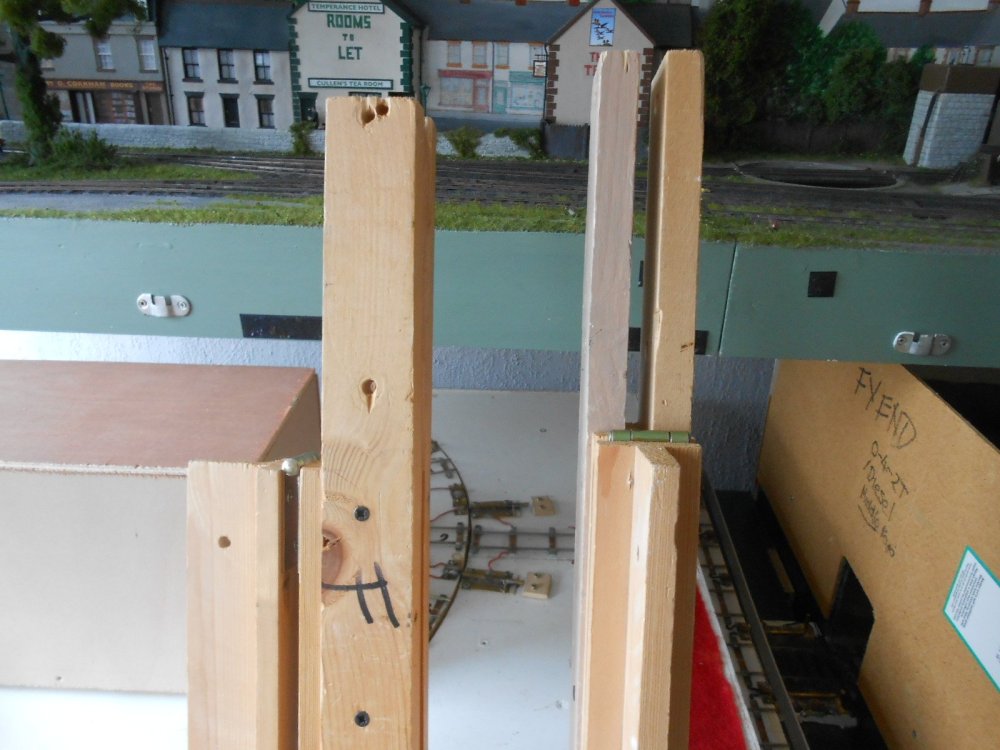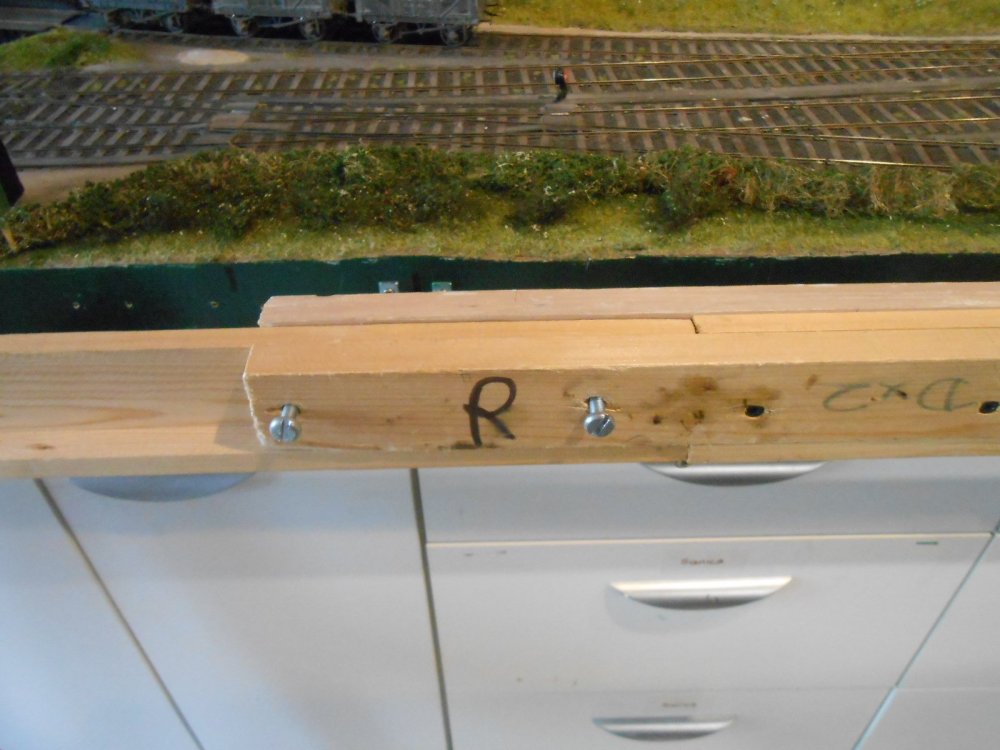
David Holman
Members-
Posts
4,359 -
Joined
-
Last visited
-
Days Won
117
Content Type
Profiles
Forums
Events
Gallery
Everything posted by David Holman
-
Fab. Wish I'd remembered to label my E class F and R. Would have saved me having to unsolder the bunker... The simple ideas are the best. Nice rolling road too.
-
7mm ones are bad enough for me, so these are nothing short of alchemy! Always great to see your work.
-
The lady of the house was away singing in Glastonbury over the weekend [choral society, not rock band], so this gave me an opportunity to set the layout up in the living room. There was a lot to do, because it had yet to be paired with the old Arigna Town/Belmullet sliding & rotating fiddle yard, nor had it been set up on the trestles I've built. I also wanted to add the fascia & pelmet, plus do a trial fit of everything in the car. Not entirely successful it must be said. It took ages to get the layout properly set up, while the pelmet and lighting proved a pain as well. Once I did get everything sorted, a major problem showed itself with both tracks across the baseboard join showing a distinct ridge, which promptly derailed all my six wheeled coaches. Not only that, but a bit of a dog leg in the platform was in exactly the right place to make coupling the AJs impossible. And there is a kink in the tunnel. And the uncoupling magnet in the platform was in the wrong place. "Apart from that Mrs Lincoln, how was the show?" Words that rhyme with rugger and rowlocks spring to mind... Then there was fitting it all in the car. It does. Just. The main issues being the extra stock boxes compared to Fintonagh, plus the Acla and the pier fiddle yard. Anyway, after a major tidy up before herself returned, got the layout on the workbench & discovered that the problem with the track across the baseboard joint was that some card packing I'd used to level things up had swollen because of the dilute PVA I'd used for ballasting. Serves me right for not sealing the surface beforehand. The only option was to to remove the rails and then lift/replace several sleepers to get down to the offending underlying surface. Removing a long section of rails along the platform at least enabled me to sort out the dog leg, while the uncoupling magnet has been moved too. None of this actually took very long, though reballasting and tidying everything will no doubt take significantly longer!
- 242 replies
-
- 13
-

-
A model with real character & love the paint job.
-
Indeed, already on to that! Clearances on the splashers are fine, but the frames need half a millimetre taking off each end to fit inside the buffer beams. Still waiting for the motor hear box though...
-
Looking at my recent rail atlas of Britain and Ireland (you can never have enough maps), see that the triangle created South of Kilkenny is double track on the new North to South arm, even though all the other lines leading to it are single.
-
Static grass applicators are great, though you still need all the Woodlands stuff as well to create weeds, bushes and so on. What you don't need is a mini vac, as it will not be strong enough. An ordinary vacuum hose with a handkerchief over the end of the pipe collects the fibres better, though you may need to invest in a really cheap mains one. It will keep the domestic authority happy though! Try an internet search for static grass applicator, as there are cheaper versions, though the "proper" ones are worth the money and you will want to use it for other projects, not least because it is fun and easy. The original Noch puffer bottle comes in handy for tight corners too.
-
I'm sure all kit and scratch builders have aspects of the process they love to hate. Anything fiddly for one - especially if it requires more hands than you were born with - and various times during construction when you find something doesn't sit right, no matter how careful you've been. Add in my latent ability to fit anything 'handed' back to front and rude words are inevitable... The footplate starts off simply enough - a nice flat etch, with just the outer sides of the four splashers to bend up. The inner sides have to be cut from the fret next, but tabs and slots help you solder them without too many problems. However, the splasher tops are the first items where you need more hands. If I was making several engines with 4'6 drivers, then it might have been worth cutting some sort of inner shape from wood, to rest the tops on, but I just tend to plough on, getting singed fingers and broadening my vocabulary. At least bending the brass to shape is easy. Tip: always use a smaller diameter rod than the curve you are creating. Turned out I could have saved myself a lot of trouble by leaving the tops until after I'd fitted the inner tank sides. These give you something else to rest the part against & having originally fixed them about half a millimetre out, I had to take them off anyway. However, before that comes the cab front, then the inner sides of the tanks. Next is the cab rear, which needs the coal plate adding & best then not to solder it back to front as I managed! Notice the simple tools which can help no end - lolly sticks or bits of thin ply to stop fingers getting singed and the all important sprung hair grips to hold things while you are soldering. Being aluminium, these are ideal as this metal is pretty much impossible to solder. I've never been very neat or tidy with soldering and use far too much of the stuff, but it helps a lot if you can do most of the main seams from the inside. Likewise only spot solder long seams to begin with, as joints are much easier to redo if [when in my case] you get it wrong to begin with. The cab sides, bunker and tanks are large etches, needing just a single fold for the tank fronts. The latter are radiused, but a series of half etch lines on the inside make this nice and easy. The rear bunker piece is done the same way. Just as well, because the next steps are to fit all the beading and the piece that goes round the cab opening is a right swine to fit. Trial and error, singed fingers and more rude words again! So, there we are. About five hours for these bits, taking us up to eight in total, with at least an hour less if I'd got things right first time...
-
Excellent! Many thanks to you both. Looks like I will need to include it. Notice that the 2-4-0 also has twin headlamps on the buffer beam! As ever, the IRM community comes up with the goods.
-
. Building the Alphagraphix kit and looking at photos for details of original appearance, when noticed the curious pipe around the front of the smokebox. It appears to come from below the footplate and am guessing may have been copper. Any ideas? Isn't on the ex works picture in Rails to Achill and removed by GSR days. Indeed, happy not to model it, if removed after 1903 or so! Interesting details on the front buffer beam, with two lamps there. Any other info on when first built welcome too. The chimney is clearly different, also the smokebox door (both in the kit), while the hand rail on the left hand tank is missing.
-
See that it is 100 years since the closure of the Castleblaney, Keady and Armagh railway between this first two places. The line had only opened in 1910, but was a victim of partition. Passenger services continued from Armagh to Keady until 1932 and freight until 1957. If you thought that was short lived, the line from Birr to Portumna Bridge only lasted from 1868 to 1878
-
I feel your pain! Looks very good to me, Alan and is similar to the system used on the North Star Swilly small tank kits, though being 7mm, they use side control springs (think they are the same as used in plunger pickups, so tiny), plus a bigger spring on the vertical pivot. The system works well and have since replicated it on my Large Tank and the D16. Wouldn't want to try it on 4mm though... Really fine work.
-
You have to buy the broad gauge axle as an extra, Ken. Must have spent a fortune over the years as they are £5 each. Rumour has it, Slaters will exchange one for the other, though not sure they'd be happy to take my 30+ spares all at once... The official back to back is quoted as 33.98mm, though that has always been 34mm to me. Works well enough with Code 100 rail too. The carpet monster eats 7mm stuff too, Alan! However, it is a very forgiving scale to work in, especially when doing broad gauge. Very addictive too, mind...
-
Norman Johnson did the Blue Bible, for the GNRI, though it doesn't appear to have a list of sheds.
-
While going through my Irish Rail Atlas, noticed that there could well be quite a few 'big' anniversaries this year, or indeed other times too. For example, it shows the Dundalk, Greenore & Newry line opening between those first two places in 1873, which makes this year its 150th anniversary. Feel sure there must be others, including ones when lines or stations closed and likewise there are folk out there to fill in the gaps!
-
Am only going on what the atlas suggests, so fuller historical knowledge trups that every time!
-
Alphagraphix/Tyrconnel E Class Made a start yesterday on my new loco kit, following the arrival of a set of Slater's wheels. This etched brass kit is good value at £120, although being 7mm scale you quickly find that wheels/motor/gears doubles that. For those of you unfamiliar with these things, you get several sheets of etched parts, along with various castings for chimney, dome, buffers and the like. I always start with the chassis, on the basis that once this is rolling nicely, then the rest of the kit is merely cosmetic. Here the AlphaG kits really come into their own, as the chassis is a one piece etch, which simply needs folding to shape, though before doing this, the axle holes need opening out to take the wheel bearings. I use a tapered reamer for this. Then you just fold the frames up and then bend the spacers into place. Half etched lines mean everything lines up neatly, so that in half an hour or so, you have a chassis! OK, it now needs everything soldering in place, but that is easy, because the pieces are already partly joined anyway being a single etch. After that, you solder in the six wheel bearings. The kit is designed for both 32mm [0 gauge] and 36.75mm broad gauge. As I model the latter, this means soldering the bearings inside out, which gives the right spacing to go with the extended 34mm axles. Slater's wheels require a bit of work to set up. A wheel nut [tightened by an Allen key] fixes the wheel to the axle, but before then, you have to screw in a 12BA bolt as part of the crankpin assembly. Easily done as a hole is pre-moulded into the wheel boss. A top hat bearing goes over each bolt on to which the coupling rods are slid & the latter are then held in place with a nut and washer. I usually find that the axles can be a slightly tight fit in the main bearings, but a bit of gentle work with a round file quickly sorts this out. So, in just over an hour, we have a nice, rolling chassis. Coupling rods come next & these are invariably etched in two or more layers that need soldering together. A couple of panel pins in a piece of plywood holds things in place while you do this. Fitting the coupling rods is always fiddly, as the top hat bearings, nuts and washers are tiny and easily lost. You also have to make sure the driving wheels are fitted correctly, with the usual convention being that those on the left hand side are 90 degrees forward of those on the right. Inevitably the crankpin holes in the coupling rods need opening out a little, so a bit of trial and error follows, but the AlphaG artwork is so good that this is rarely much trouble. What is a bit of a faff with pretty much any etched kit is that you now find the wheels and rods are repeatedly on & off while you clean up the chassis, fit things like guard irons, brake gear & of course the pick ups and motor gearbox. However, knowing the chassis rolls nicely definitely eases the pain, because there are few things worse than a model loco that doesn't run properly. Time spent so far about three hours.
-
The Green Bible lists the following sheds with loco allocations in 1945: Athlone Bray Cork & Rocksavage Dublin Broadstone, Grand Canal St, Inchicore Galway Limerick Limerick Junction Mallow Mullingar Sligo Thurles Tralee Waterford Westport
-
A couple of pics of Hajducki's atlas - cover and a map. Going through the pages, north to south, the [by no means definitive] list is shown below, though I've left out the obvious modern double track: Derry [Foyle Rd to St Johnston Belfast - Ballymena Belfast - Whitehead Portadown - Trew & Moy and Dungannon - Donaghmore Portadown - Armagh Belfast - Bangor & Comber Monaghan - Clones Collooney - Sligo Galway - Oranmore Athenry - Attymon Athlone - Ballenasloe & Roscommon Mulligar - Athlone & Roscommon Dublin - Athlone Clonsilla - Drumree Sallins - Naas Cherryville Junc - Carlow Wicklow - Newcastle Kilkenny - Laviston Waterford - Fiddown & Portlaw Cork - Blackrock Many of these lines were singled a long time ago, while some are closed completely. Others started single, were made double, only to revert to single again!
-
A bit of woodwork Not my forte by any means, but needs must as the adjustable metal trestles I've been using with Fintonagh will not fit in my car alongside Northport Quay when it goes out to shows. One option would have been to add folding legs to each of NPQ's baseboards, but they are heavy enough already - as is the sliding/rotating fiddle yard from Arigna Town, which is also being used. So, a bit of head scratching and scribbling came up with a pair of wooden trestles which will fold flat and enable me to use the folding beams from Fintonagh with them. These beams also give me a 60cm/2ft space to put a small fiddle yard at the other end to represent the pier siding. Nothing special about the trestles - I reused some 2x1 from an earlier project, along with some steel hinges and 5mm ply that was also spare, so they haven't cost me anything [this time]. What I have done is added some small spacers to the top of each trestle to keep the beams apart. The beams are also hinged in the centre [necessary as they are 9'6 long overall] and locked by two 6mm bolts. They are additionally kept apart at each end by two plywood plates, which also serve to stop them moving longitudinally. Lugging various layouts to over 100 shows over the years gradually teaches you the importance of being able to secure things for transport, while also minimising the number of trips to and from the car. Re-usable cable ties hold the two trestles together and [fingers crossed] they only take up half the space of the Screwfix metal ones. Fintonagh has an outing to a show at Welwyn Garden City as the end of April, so will be able to test the new trestles with that. With a bit of luck, they will save me another few minutes setting up and knocking down time too.
-
Must be one of the more unusual places to build a model railway!
- 1 reply
-
- 1
-

-
S. Maxwell Hajducki's A Railway Atlas of Ireland (David & Charles 1974) is an excellent resource. Contains 36 pages of maps showing opening dates, double or single track, plus narrow gauge, mineral lines and tramways. Also a double page covering closures and a summary of all the independent railway companies too. Well worth finding a copy - got mine second hand quite a few years ago, so not sure how many there are out there.
-
Neat soldering too, I still tend to rely on careful cleaning up!
-
Bought mine today and delighted to see an article by Chris Romain on his fabulous 10mm scale model of Killybegs. It is, quite simple, just wonderful.
- 1 reply
-
- 3
-

-
Made a mistake re the locoshed, which is covered with Wills random stone sheets. The water tower is DAS on foamboard, with the rendered parts represented by water colour paper.
.png.c363cdf5c3fb7955cd92a55eb6dbbae0.png)


